Many a times in projects communication between components are complex. Due to this the logic between the components becomes very complex. Mediator pattern helps the objects to communicate in a disassociated manner, which leads to minimizing complexity.
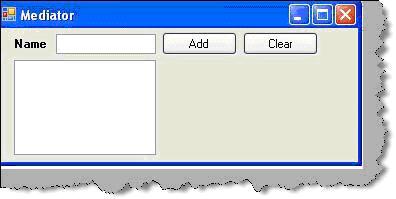 Figure: – Mediator sample example
Figure: – Mediator sample example
Let’s consider the figure ‘Mediator sample example’ which depicts a true scenario of the need of mediator pattern. It’s a very user-friendly user interface. It has three typical scenarios.
Scenario 1:- When a user writes in the text box it should enable the add and the clear button. In case there is nothing in the text box it should disable the add and the clear button.
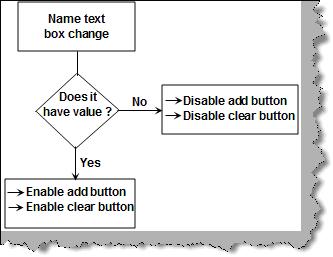 Figure: – Scenario 1
Figure: – Scenario 1
Scenario 2:- When the user clicks on the add button the data should get entered in the list box. Once the data is entered in the list box it should clear the text box and disable the add and clear button.
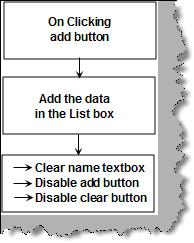 Figure: – Scenario 2
Figure: – Scenario 2
Scenario 3:- If the user click the clear button it should clear the name text box and disable the add and clear button.
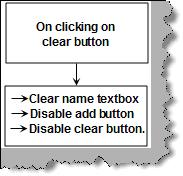 Figure: – Scenario 3
Figure: – Scenario 3
Now looking at the above scenarios for the UI we can conclude how complex the interaction will be in between these UI’s. Below figure ‘Complex interactions between components’ depicts the logical complexity.
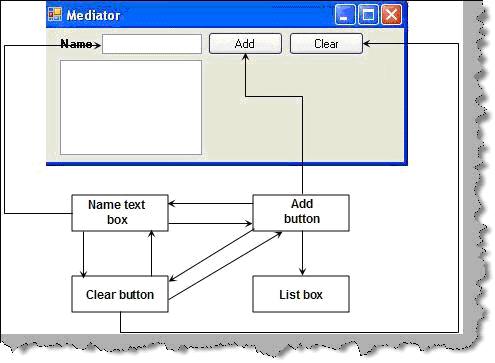 Figure: – Complex interactions between components
Figure: – Complex interactions between components
Ok now let me give you a nice picture as shown below ‘Simplifying using mediator’. Rather than components communicating directly with each other if they communicate to centralized component like mediator and then mediator takes care of sending those messages to other components, logic will be neat and clean.
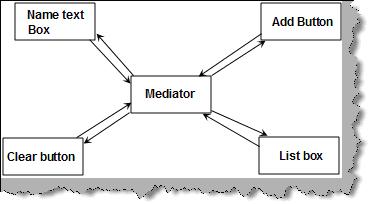 Figure: – Simplifying using mediator
Figure: – Simplifying using mediator
Now let’s look at how the code will look. We will be using C# but you can easily replicate the thought to JAVA or any other language of your choice. Below figure ‘Mediator class’ shows the complete code overview of what the mediator class will look like.
The first thing the mediator class does is takes the references of the classes which have the complex communication. So here we have exposed three overloaded methods by name ‘Register’. ‘Register’ method takes the text box object and the button objects. The interaction scenarios are centralized in ‘ClickAddButton’,’TextChange’ and ‘ClickClearButton’ methods. These methods will take care of the enable and disable of UI components according to scenarios.
 Figure: – Mediator class
Figure: – Mediator class
The client logic is pretty neat and cool now. In the constructor we first register all the components with complex interactions with the mediator. Now for every scenario we just call the mediator methods. In short when there is a text change we can the ‘TextChange’ method of the mediator, when the user clicks add we call the ‘ClickAddButton’ and for clear click we call the ‘ClickClearButton’.
 Figure: – Mediator client logic
Figure: – Mediator client logic